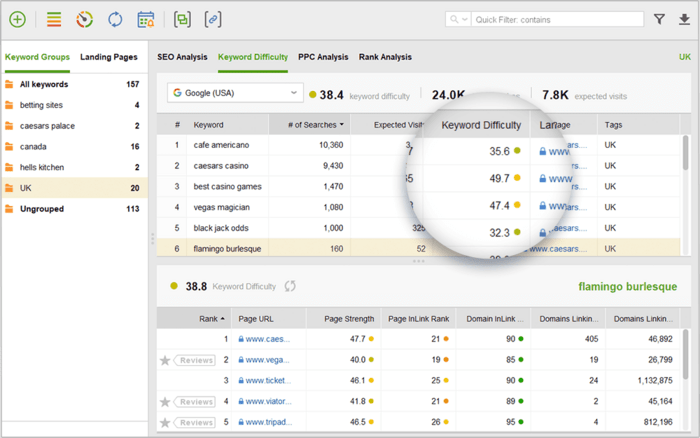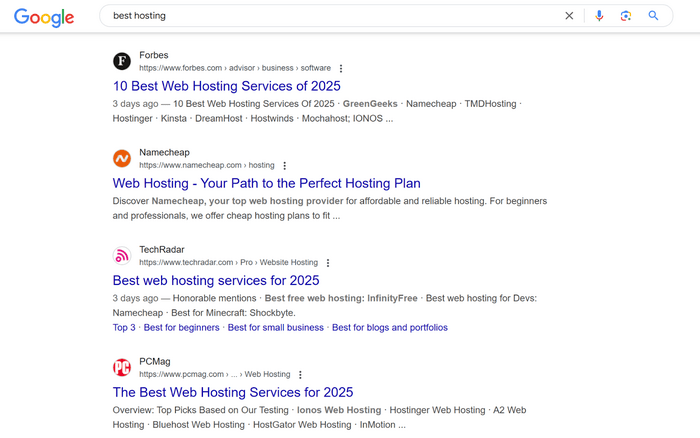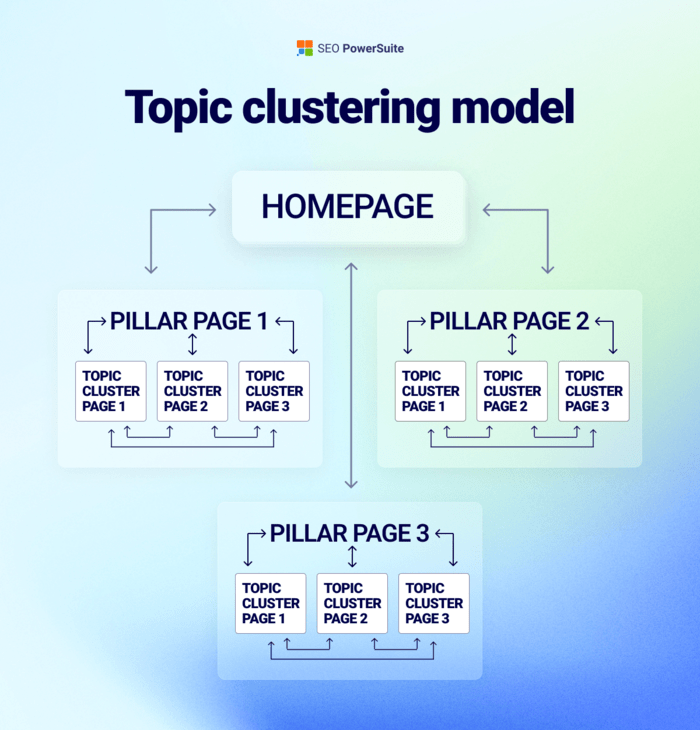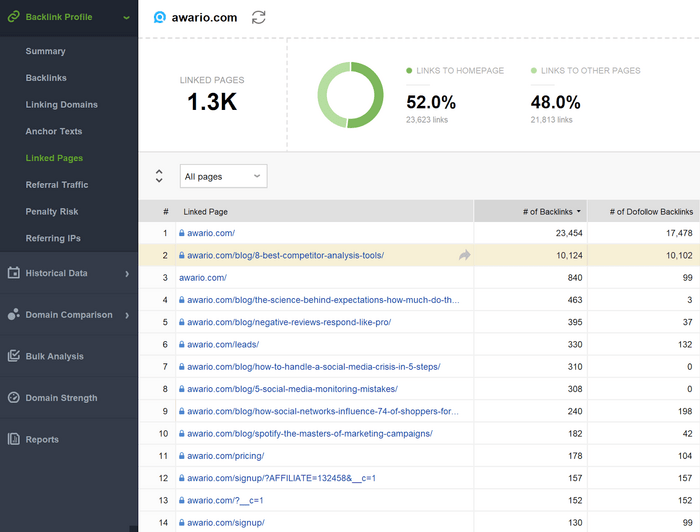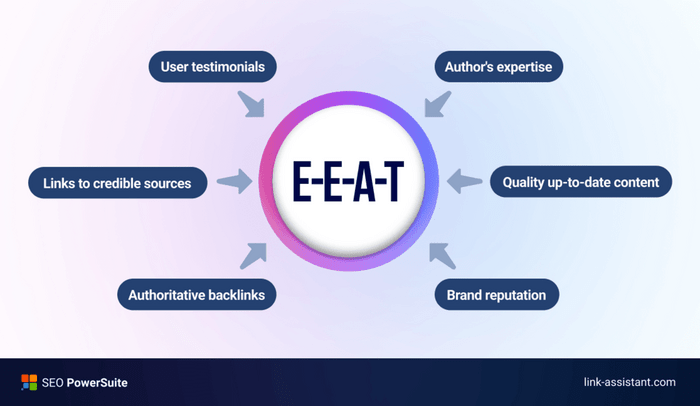How to Rank in a Competitive Niche in 2025

Contents
- TL;DR: How to Rank in a Competitive Niche
- Step 1. Understand what makes your niche competitive
- Step 2. Build topical authority with smart content clustering
- Step 3: Nail search intent
- Step 4: Target long-tail and sub-niche keywords
- Step 5: Refresh & repurpose your content
- Step 6: Build backlinks that actually move the needle
- Step 7: Don’t ignore the UX and trust layer
Ever Googled something lately and thought, “Does anyone rank anymore besides YouTube, Reddit, or some Fortune 500 blog?”
You’re not alone.
These days, the first page of Google often feels like an exclusive club—dominated by tech giants, aggregator sites, and Wikipedia-like authority pages that seem permanently glued to the top spots. Scroll a little, and you’re still not seeing the little guys.
Trying to break into a competitive niche today is like setting up a tiny lemonade stand between Starbucks and McDonald’s.
In this guide, we’re not going to rehash the same old “just write great content” advice. We’re diving deep into what actually works in 2025 when you're up against websites with million-dollar content budgets. If you're tired of getting buried beneath Reddit threads and YouTube videos—even when your content is solid—this is your playbook.
Let’s get tactical.
TL;DR: How to Rank in a Competitive Niche
To rank in a competitive niche, you need more than just “great content.” In 2025, success comes from smart strategy and consistent execution. Here’s what works:
- Analyze the competition: Check keyword difficulty, SERP saturation, domain authority, and ad presence to understand how tough your niche really is.
- Build topical authority: Use content clusters to fully cover a subject area and create strong internal links between related posts.
- Match search intent: Align your content format (blog, list, video, etc.) with what Google is already ranking for your target query.
- Target long-tail keywords: Focus on specific, low-competition phrases that solve real user problems and are easier to rank for.
- Refresh & repurpose: Update older content with new info, visuals, and internal links to climb the SERPs without starting from scratch.
- Earn high-quality backlinks: Use digital PR, linkable assets, and competitor backlink analysis to build trust and authority.
- Improve UX & trust signals: Add author bios, HTTPS, fast loading times, and clear CTAs to boost both rankings and conversions.
Step 1. Understand what makes your niche competitive
Competitive niches aren’t just crowded—they’re controlled by sites with serious authority, massive content libraries, and aggressive ad budgets.
But once you understand what makes your niche tough—and how to analyze the competitive signals—you can find the gaps they’re ignoring.
1. Keyword Difficulty (KD)
Keyword Difficulty (KD) is a metric used by SEO tools to estimate how hard it would be to rank on the first page of Google for a given keyword. It’s usually scored from 0 to 100—higher scores mean tougher competition.
KD is calculated based on factors like:
- The number and quality of backlinks the top-ranking pages have
- The domain strength of those pages
- Content performance signals (e.g., engagement, freshness)
Use tools like SEO PowerSuite’s Rank Tracker to evaluate your primary keywords.
Generally, a KD under 30 is accessible for newer websites, while anything over 50 is a signal of serious competition. If your target keyword scores 70+, you’ll likely need strong backlinks or domain authority to stand a chance.
2. SERP saturation
Search your target keyword and ask: are you seeing a wall of near-identical articles, Reddit threads, and aggregator results? Crowded SERPs mean fewer gaps to break into — unless you offer something clearly different or better.
3. Domain Authority
Domain Authority (DA) is a score developed by Moz (also known as Domain Rating (DR) in tools like SEO PowerSuite and Ahrefs). It ranges from 0 to 100 and predicts how likely a website is to rank in search engines based on its backlink profile and overall authority.
In short: the higher the DA, the harder it is to outrank that domain without serious SEO power.
If most top-ranking sites have a DA/DR of 70+, it's a high-bar niche.If you spot DA 20–40 sites ranking in the top 10? That's your window.
4. Ad spend & commercial intent
Plug your keywords into Google Keyword Planner to check:
- Cost per click (CPC): Higher CPC = more competition from advertisers.
- Ad density: Are there 2–4 ads showing before the first organic result?
High ad competition often signals high buyer intent—which makes these niches valuable, but fiercely competitive in both paid and organic results.
In short, competitive niches are defined by strong competitors, saturated SERPs, high keyword difficulty, and ad-heavy results pages. But each signal also points to opportunities — if you know where to look.
Step 2. Build topical authority with smart content clustering
If you're trying to rank in a competitive niche, publishing a handful of blog posts won’t cut it — especially if each post is about something totally unrelated to the next. Google rewards websites that go deep, not wide.
That’s where topical authority comes in.
Topical authority refers to how comprehensively your website covers a subject area. It’s not just about how many articles you have — it’s about how well they:
- Cover subtopics and related questions
- Link to each other in a meaningful way
- Satisfy different stages of user intent (from beginner to expert)
Google doesn’t have a “topical authority” score you can check, but it infers it by crawling your internal links, analyzing keyword coverage across pages, and observing user behavior on your site (dwell time, pogo-sticking, etc.).
Organize your cluster like a pro
A strong content cluster starts with a pillar page — a comprehensive overview of your main topic. Supporting articles then cover subtopics like FAQs, use cases, or comparisons. Every support post should link back to the pillar, target a unique search intent, and connect to 1–2 other related posts to strengthen your semantic web.
Make use of internal linking
Don’t treat internal linking as an afterthought. It’s how Google understands your site's structure — and your topical depth.
- Use keyword-rich anchor text. Skip generic “click here” links.
- Link from high-authority posts. Pass link equity to lower-performing content.
- Prioritize context. In-body links outperform sidebar widgets.
- Keep the cluster tight. All supporting posts should link to the pillar and to at least one sibling pag
Tools to build and maintain topic clusters
You don’t need to map all of this manually (though a spreadsheet works in a pinch). Here are some tools that help visualize and manage topical authority:
- Website Auditor – Check internal link structure and identify orphan pages. After the tool scan your website, you’ll be able to see all orphan pages marked as red dots under Site Structure > Visualization:
- Custom sheets + ChatGPT – Combine AI prompts with spreadsheet logic to manually group and link.
Let’s say you have a spreadsheet with 150 email marketing keywords. You can paste the full list into ChatGPT and prompt it to group them into 5–7 topical clusters based on theme and search intent. ChatGPT might return clusters like “email for beginners,” “automation workflows,” “subject lines and templates,” and “performance metrics.” You then copy those group labels back into your sheet by adding a new “Cluster” column and tagging each keyword accordingly. In just a few minutes, you’ve created a clean, organized keyword map—no advanced tools required.
Topical authority is one of the few SEO levers that doesn’t require big budgets or flashy PR. It rewards consistency, structure, and depth. And in competitive spaces — where backlinks are expensive and brand trust takes time — being the most helpful, structured site in your niche is a powerful edge.
If you can become the site that has the best “hub” on a subject — and every connected “spoke” to go with it — Google will keep coming back to you for answers.
Step 3: Nail search intent
You could write the most helpful article in your niche, perfectly optimized with the right keywords, and still struggle to rank — if it doesn’t match what users were actually searching for.
That’s the power of search intent — and getting it right is make-or-break SEO.
What is search intent?
Search intent (or user intent) is the reason behind a search query — the user’s goal when they type something into Google.
Every query falls into one of four major categories:
| Intent type | Description | Examples |
|---|---|---|
Each of these requires a different kind of content. A transactional query shouldn’t lead to a blog post — it should go to a product page or signup flow. An informational query won’t rank with a category page; it needs helpful, digestible content.
How to reverse-engineer search intent
Search intent isn’t a mystery — Google reveals it in plain sight. Just follow this three-step process:
- Google the keyword yourself.
What shows up — blogs, videos, tools, product pages? - Analyze what ranks.
Are titles phrased as guides, comparisons, or commercial CTAs? Do you see mostly informational content — or pages built to convert? - Match Google’s preferred format.
If 8 of the top 10 results are listicles, your dense 3,000-word essay might flop. If video dominates, written content alone may not get noticed.
Tip: How to win featured snippets
Featured snippets are those answer boxes that appear above the first result — and they’re one of the fastest ways to jump the queue in competitive SERPs.
To earn that coveted featured snippet, structure your content in a way Google can instantly understand:
- Paragraph snippet? Use a short H2 like "What is X?" followed by a 40–60 word answer.
- List snippet? Use numbered or bullet lists under a clear heading.
- Table snippet? Use real HTML tables (not screenshots).
- Video snippet? Match your video title and description exactly to the target query.
In highly competitive SERPs, relevance beats authority. If your content doesn’t align with the intent behind the keyword, it won’t matter how optimized or well-written it is.
Ranking on page one isn’t about stuffing in more keywords — it’s about answering questions the way Google knows users want them answered.
Step 4: Target long-tail and sub-niche keywords
If you're struggling to rank for big, competitive keywords like "email marketing" or "best protein powder" — stop. The truth is, you shouldn’t even be trying.
The fastest path to SEO wins in a competitive niche isn’t brute force. It’s precision.
And that means targeting long-tail and sub-niche keywords — search terms that may not have massive volume, but have clear intent, low competition, and higher conversion rates.
What are long-tail and sub-niche keywords?
Long-tail keywords are longer, more specific search phrases — typically 3+ words — that zero in on a narrow topic or intent. They may only have a few hundred searches per month, but they’re far easier to rank for and often have stronger commercial intent.
Sub-niche keywords are related to a smaller segment of a larger market. These help you carve out your own space without going head-to-head with the giants in your industry.
Examples of high-converting long-tails in tough markets
Let’s say you’re in one of these ultra-competitive niches:
| Niche | ||
|---|---|---|
| Fitness | ||
| Marketing | ||
| Finance | ||
| SaaS |
Why do these work? Because they align with very specific needs, and users searching them are often further down the buying funnel.
Combine keyword data with real audience pain points
Here’s where most people get stuck: they find a list of long-tail keywords, but they don’t know which ones are actually worth targeting.
The key is to map keyword ideas to actual user problems. Here’s how:
- Start with seed keywords related to your product, service, or niche
- Use keyword tools like SEO PowerSuite’s Rank Tracker to expand into related questions and phrases, filter for low competition (Keyword Difficulty < 30)
- Sort by intent (Are people looking to learn, compare, or buy?)
- Overlay your buyer personas: What are their frustrations, goals, objections?
- Cross-check search intent: Use Google’s SERPs to verify what kind of content ranks
Let’s say you offer an app for beginner investors. Instead of “best investing apps” (which is saturated), you might find:
- “best investing app for beginners with no minimum deposit”
- “how to invest in the stock market as a student”
- “safe investment options for single moms”
Each of those keywords speaks directly to a niche concern — and people searching them are much more likely to click, stay, and convert.
ChatGPT + Rank Tracker = long-tail goldmine
Here’s a simple but powerful workflow that blends human creativity + real SEO data:
Step 1: Use ChatGPT for ideation
Prompt example:
“Give me 15 long-tail keyword ideas related to 'online therapy' that reflect common emotional pain points.”
This helps you generate empathetic, problem-driven keyword angles you might not think of on your own.
Step 2: Validate in Rank Tracker
Paste those keywords into SEO PowerSuite’s Rank Tracker:
- Check search volume
- Evaluate keyword difficulty (KD)
- See if the SERPs show weak results or outdated content
Pro tip
Step 5: Refresh & repurpose your content
In competitive niches, Google loves fresh, relevant, up-to-date content. If you’ve got blog posts or landing pages that are collecting dust in the rankings, there’s a good chance a refresh could give them the boost they need to reach page one.
Let’s break down how to find those opportunities — and how to make them count.
How to audit your existing content for SEO opportunities
Refreshing is efficient — but only if you pick the right pages. Here’s a simple audit process to spot high-potential candidates.
Step 1: Use Google Search Console (GSC)
Look for:
- Pages with declining clicks/impressions
- Keywords you're ranking on page 2 for
- Pages with lots of impressions but low CTR
These are pages Google wants to show… but maybe they’re outdated, poorly structured, or missing something users now expect.
Step 2: Cross-check with Rank Tracker
- Confirm the keyword rankings and movements
- Compare your page with the current top-ranking competitors
- Identify what your page is missing (depth, format, freshness)
Step 3: Evaluate user metrics
- High bounce rate
- Low time on page
- Poor engagement
These are signals that users aren’t finding what they expected.
What to improve when updating content
Refreshing doesn’t mean rewriting everything from scratch. Think of it like renovating a great house — keep the structure, update what’s outdated, and make it more appealing to today’s visitors.
Here’s what to improve:
Update outdated info. Replace broken links, old screenshots, or obsolete examples. Only change the publish date if meaningful changes were made.
Add visuals. Drop in charts, infographics, or video embeds to improve engagement.
Expand sections. Answer additional People Also Ask queries or add new data points.
Fix internal links. Make sure this piece links to relevant new content — and is linked from your newer articles too.
Tip
Repurpose for more reach
Once a post is refreshed, you can repurpose it into other formats to get even more mileage:
- Slide decks for LinkedIn
- Short videos for YouTube or TikTok
- Twitter/X threads
- Email newsletters
- Webinars or podcast talking points
Every format helps reinforce your topical authority — and puts more eyes on your content.
Step 6: Build backlinks that actually move the needle
You’ve built great content. It targets long-tail keywords. It aligns with intent. But in a competitive niche, that’s often not enough.
You need backlinks — but not just any backlinks.
In 2025, it’s not about quantity. It’s about quality, context, and trust. One link from a high-authority, niche-relevant site can do more for your rankings than 50 spammy guest posts.
Let’s talk about how to earn the right kind of links — the ones that actually move the needle.
Think digital PR, not just guest posts
Mass guest posting on irrelevant sites is dead. Instead, focus on digital PR — earning links from journalists, newsletters, and authority blogs.
Here’s how to start:
- Create data-driven content, original research, or compelling expert takes
- Pitch your story to relevant reporters using platforms like Help a B2B Writer, or Qwoted
- Share “reactive” insights on trending topics (aka newsjacking)
Use visual assets as link magnets
Infographics, interactive tools, templates, and charts make your content more than just readable — they make it linkable.
Some ideas:
- Turn blog stats into shareable visuals
- Create calculators or tools that solve niche-specific problems
- Build downloadable checklists or comparison charts
Pro tip: Pitch your visuals to bloggers writing roundups, explainers, or “statistics” posts in your niche. Many are looking for quality embeds.
Steal your competitors’ best links
No need to start from scratch. Your competitors have already shown what works — you just need to reverse-engineer it.
Use SEO SpyGlass to extract your competitors’ top links. Find which pieces earned those links, then create something better. Then you can simply reach out to the same sites with your updated asset.
Pro tip: partner with aggregators & ranking sites
In many niches — SaaS, ecommerce, B2B — there are already “best tools” and top 10” style articles ranking for your keywords.
These articles already own page one. So instead of competing, partner with them.
How?
- Reach out and offer an affiliate deal, free trial, or exclusive bonus
- Pitch your product or content for inclusion
- Provide a short write-up and visual assets to make their job easier
Getting listed can instantly boost traffic, backlinks, and credibility — especially if you’re in a competitive tool-driven space.
Step 7: Don’t ignore the UX and trust layer
It’s easy to obsess over keywords, backlinks, and content strategy — but in competitive niches, trust and user experience are just as critical.
You might rank well for a while, but if your site feels sketchy, slow, or impersonal… Google notices. So do users.
Let’s talk about the often-overlooked layer of SEO success: UX + trust — also known as E-E-A-T.
What Is E-E-A-T and why it’s ranking insurance
E-E-A-T stands for:
- Experience – Has the author actually done what they’re writing about?
- Expertise – Does the content come from someone who knows their stuff?
- Authoritativeness – Is the website well-cited and respected?
- Trustworthiness – Is the content honest, secure, and safe?
In industries like finance, health, SaaS, and anything YMYL (Your Money, Your Life), E-E-A-T is not optional. Google wants to protect users — and will demote content that looks untrustworthy, regardless of how well-optimized it is.
UX + trust must-haves for competitive niches
Whether you're writing about SEO tools or skincare routines, your site should radiate trust and clarity. Here’s how:
Author bios & byline credibility
- Include real author names, photos, and relevant credentials
- Link to author social profiles or other authoritative sites they write for
- Add “fact checked by” or “reviewed by” when possible
HTTPS, site speed & mobile optimization
- Your site must be secure (SSL)
- Use tools like Google PageSpeed Insights and WebPageTest to improve loading time
- Ensure layout and functionality work beautifully on mobile
Clear CTAs, contact info & about pages
- Help users understand who you are
- Make your contact details, refund policy, and terms of service easy to find
- Include trust badges, certifications, or media mentions if applicable
Tip: Improve conversions once you rank
Ranking is only half the battle. Once users land on your site, conversion-focused UX becomes your secret weapon.
Try:
- Sticky CTAs on long-form guides
- Testimonials and reviews placed near offers
- Social proof (logos, numbers, user counts) in the hero section
- Live chat or chatbot for high-converting pages
Final thoughts: outsmart, don’t outspend
Ranking in a competitive niche is never easy — but it’s far from impossible.
You don’t need a million-dollar budget, a massive content team, or a flood of backlinks overnight. You need strategy, structure, and a willingness to play the long game smarter than your competitors.
And when you're ready to scale? Use AI and automation to double down on what already works.
Consistency, creativity, and a little technical edge go a long way. Play it smart — and you will find your way to page one.



